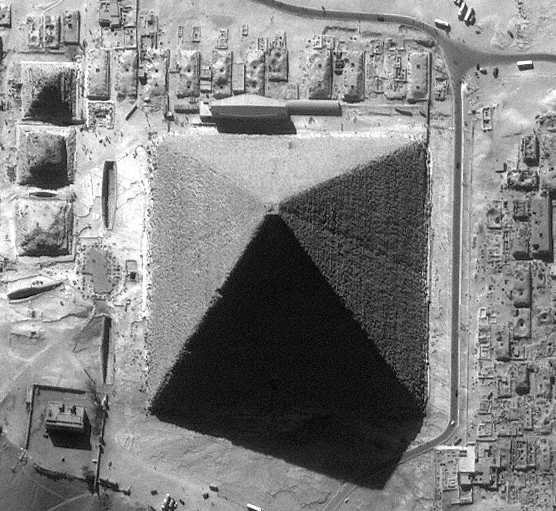
PBS NOVA has an Online Exploration of the Giza Pyramids and Sphinx with commentary by Mark Lehner and Zahi Hawass, who advocate an age of about 4,600 years for the Giza pyramids. Mark Lehner says "... we know ... the date of the pyramids ... mostly by context. The pyramids are surrounded by cemeteries of other tombs. ... we find organic materials ... that can be radiocarbon dated ... But primarily we date the pyramids by their position in the development of Egyptian architecture and material culture over the broad sweep of 3,000 years. ..."
I agree with the dates of the materials found in the area of the Giza pyramids, but I do NOT agree that those materials, tombs, etc., are the materials, tombs, etc., of the builders of the Giza Pyramids and Sphinx. In my opinion, the builders were either the Ice Age Civilization of 36,525 to 11,600 years ago, or, at the latest, a part of a global Early Human Civilization that broke up about 6,000 years ago, and that the Giza Sphinx and Pyramids were already built about 5,100 years ago when Menes reunited Lower Egypt, including Giza, with Southern Upper Egypt.
Here are more comparisons of my opinions with those of Mark Lehner, Zahi Hawass, and others.
The Great Pyramid has passageways and chambers, including a Mid Chamber, an Upper Chamber with Ceiling Chambers,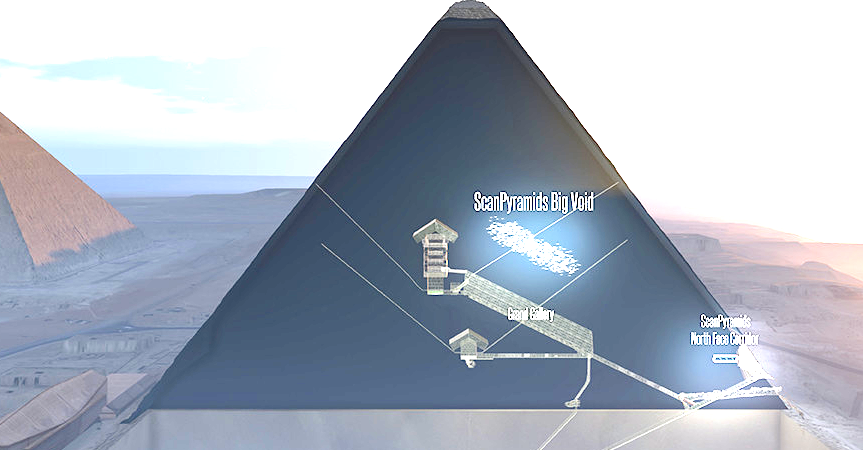
Above the roof of the Upper Chamber are 5 Ceiling Chambers.
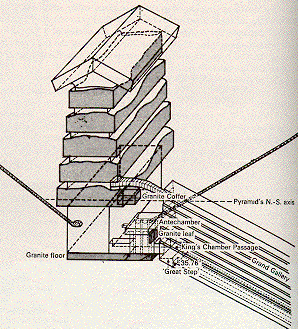
They are formed by 5 granite slabs
and a 6th top roof of gabled limestone.
They were opened by excavations by Vyse in the 1800s.
The lowest of the 5 Ceiling Chambers was found
to contain a black dust, possibly the remains of
insects entombed in construction.
The limestone gable of the highest chamber is the only place
(other than the Mid Chamber and some parts of
the Grand Gallery) that contains salt deposits.
The Ceiling Chambers contain some markings that are shown in a photograph on page 51 of Mark Lehner's book The Complete Pyramids (Thames and Hudson 1997):
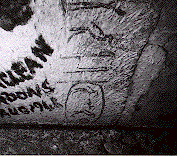
In my opinion, the "graffitti which included the name of the Pharaoh Khufu" is (like the other graffitti) of more recent origin than the construction of the Great Pyramid, perhaps being daubed on by workers during the 1837 expedition of Howard Vyse that blasted open a passage to that Ceiling Chamber.
If the 6 slabs are considered to be lines of
an I Ching hexagram,
with granite slabs being unbroken lines
and a limestone gable being a broken line,
you get:
the I Ching hexagram Lake over Heaven,
which can be interpreted as:
News comes from afar,
deal with it by words, not war.
It could serve two types of Purposes:
You can see many Symbolic possibilities in these web pages about Pyramids.
Some examples are:
Information encoded in the thicknesses of its layers, or COURSES. (Jim Branson has been studying this in some detail.)
Correspondence between levels in the Great Golden Pyramid and Levels in Physics:
Correspondence between its dimensions, the timetable of History, and the Calendar:
and
Transmission/Reception may be among many different forms of Life.
What about the physical structure of the Machine?
(This is conjecture based on e-mail conversation with J. C. Paul - however I am solely responsible for errors of fact that may appear here.)
Information is received by the Pyramid as a receiver,
and sent by the Pyramid as a transmitter.
Can the Great Golden Pyramid be a transmitter/receiver,
or transceiver device for electromagnetic or other signals?
Consider the materials used to
build the Pyramid: limestone and granite.
Limestone is made up of calcium and magnesium carbonates.
Calcium carbonate (calcite) is electromagnetically anisotropic
(put a calcite crystal over a straight line,
rotate the crystal, and you will see two images of the line,
appearing to be in different places,
because the effective velocity of light
depends on the direction it goes through the calcite crystal).
Limestone can also be triboluminescent,
meaning that if it is crushed or scratched or rubbed,
it becomes luminescent.
Although I do not understand details,
this means to me that limestone can be used
to control electromagnetic radiation,
and that physical stress can modulate the effect.
I CONJECTURE THAT LIMESTONE IS USED AS AN "ANTENNA"
material for the Great Golden Pyramid transceiver.
Granite is largely made up of quartz.
Quartz is piezoelectric,
meaning that
a quartz crystal changes its electric charge distribution
when it vibrates
(i.e. when it is subjected to change in pressure),
and that
a quartz crystal vibrates when it is subjected to
a changing electromagnetic field.
Some examples of quartz conversion
of sound vibrations to and from electromagnetism
(beyond the old crystal radio) are:
ceramic sonar transducers;
ultrasonic electronics; and
piezoelectric/seismic location of quartz/gold mineral veins.
Again, I do not understand details, but
I CONJECTURE THAT GRANITE IS USED AS A "CONVERTER"
of vibration (sound) to and from electromagnetism
for the Great Golden Pyramid transceiver.
If sound vibrations are the basis for
the initial input of transmitted information
and
the final output of received information,
then
how does the Great Golden Pyramid act as a machine
to produce the sound vibrations
containing information to be transmitted?
Look at the overall plan of the Pyramid
and a closeup of the Upper Chamber area
as shown by the Giza Plateau Computer Model of
The Oriental Institute of The University of Chicago.
Since the walls, ceilings, and floor of the Mid Chamber
are limestone, the antenna material,
and
since its niche looks like a place you would stand
to receive a signal,
I think that the
MID CHAMBER IS THE RECEIVING CHAMBER.
Since the Upper Chamber has granite walls, floor, and ceiling,
all of which can convert sound vibrations
into electromagnetism,
I think that the
UPPER CHAMBER IS THE TRANSMITTING CHAMBER.
Its ceiling is granite-slab,
the lowest of 5 granite-slabs separated
by the Ceiling Chambers,
with the ceiling of the top Ceiling Chamber
being limestone gable.
If the Great Golden Pyramid is considered
to be a Great Musical Instrument,
the 5 Ceiling Chambers
would act as resonating chambers
to modulate the sound/electromagnetism conversion.
Another way to modulate the sound/electromagnetism
is by the connection of the Upper Chamber
to the Grand Gallery
through the Antechamber.
The choice of placement of granite leaves
into the grooves of the Antechamber
could modulate not only the connection
between the Upper Chamber and the Grand Gallery,
but also the conversion by the granite in the leaf.
Still another way to modulate the sound/electromagnetism
would be by putting the source in the granite coffer
(which is about the right size to contain
the Ark of the Covenant including the poles
on which it is carried)
and then putting at least one granite leaf
in a bottom-groove position in the Antechamber,
so that the Upper Chamber could be flooded with liquid
(water, mercury, or something else)
up to the level of the top of the granite leaf,
making a liquid lake above the Mid Chamber heaven.
Then, the source would be protected
from the liquid by the granite coffer,
and the liquid could act as a further modulator,
or maybe even produce electromagnetic radiation
through the mechanism of sonoluminescence.
For still further modulation, other materials
might be placed between granite leaves in the Antechamber
or in the granite coffer with the source.
For example, consider the research program
of Russell at UBC:
"Our current research is based on reports,
principally in the Soviet literature,
that the conversion of acoustic to electromagnetic signals
in quartz,
sulphides,
kimberlites [diamond or-bodies]
and possibly other minerals,
produces signals useful for geophysical exploration.
Seismoelectric conversions are produced by:
linear responses due to electrokinetic conversions;
piezoelectric conversions from quartz deposits;
pulsed radio-frequency responses from sulphides."
After the transceiver has done its job,
the granite leaf sections would be moved,
allowing the spent liquid to drain away
down the central groove of the floor
of the Great Gallery to the Well Passage,
and thence to the chambers underneath the pyramid,
where they soak into the surrounding earth.
Some of the liquid would probably
spill over into the passageway to the Mid Chamber,
which might, as the liquid evaporates and interacts
with its limestone walls, accumulate salt deposits.
Other limestone-areas could also have accumulated salt
deposits from liquid evaporation.
As you have probably noticed,
I have (due to my ignorance) not given
any details supporting my conjectures on
acoustics or sound/electromagnetism conversion.
An interesting reference is
the book of Fletcher and Rossing,
The Physics of Musical Instruments.
Also, I have not said how to produce the sound
in the first place,
except that the granite coffer might be used,
and that it might have contained the Ark of the Covenant.
Some studies indicate that ultrasound
may have been used in constructing the granite coffer
and other pyramid structures.
A source for ideas about how such a sound machine
might work is the Sphinx group WWW page about
ACOUSTICS of MESOAMERICAN and ANDEAN STRUCTURES.
Particularly relevant are:
The Castillo at Chavin De Huantar in Peru was a ceremonial center
with drains where water could be pushed through and
the roar of the water could be heard through vents and
chambers within the center itself.
When this was done, the center literally roared.
Ancient Peruvian Whistling pottery vessels made a sound
when you poured water from them.
They were tuned fairly precisely, if you blew into them.
Two vessels blown simultaneously produced difference tones.
Chichen Itza has a series of cones that produce musical tones
when tapped with a wooden mallet.
At Tulum on the Yucatan coast there was a temple
which gave a clear and long-range whistle or howl
when the wind velocity and direction were correct.
At the Mayan Pyramid I at Tikal
a person standing on the top step speaking in a normal voice
can be heard by those at ground level for some distance.
At the 3 pyramids of the Group of the Cross at Palenque
a three-way conversation can be held at the tops of the three pyramids.
The Tikal and Group of the Cross pyramids all have flat tops
on which are placed temples with roof combs, as shown in
this cross section of the Pyramid of the Cross:
Note the similarity between
the construction of Mesoamerican roof combs
and the Grand Gallery of the Great Golden Pyramid of Giza.
Since the Great Golden Pyramid also has a flat top,
a similar temple with roof comb could have been there originally.
If the Great Golden Pyramid
is a sound/electromagnetism transceiver,
with the FACES of the Pyramid acting as large antennae,
then
THE GEOMETRY OF THE FACES
of the Great Golden Pyramid
should be designed to make then effective antennae.
HERE is a page about the FACES
and their geometry.
Sometimes the Earth's magnetic pole wanders near Giza.
HERE is a page about its layers, or COURSES.
More interesting math (and language) stuff
is on an Egyptian Hieroglyphics page.
Some comments on human civilization
at the time of the building of the Great Golden Pyramid
are HERE.
Note that the boats found near the Pyramid
(see the boat location shown on an overall plan of the Pyramid)
indicate that it was built by a seafaring civilization.
Images of such boats,
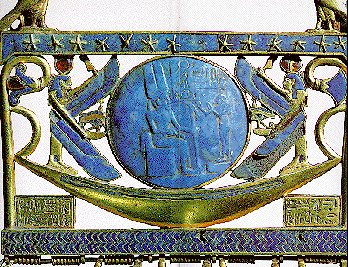
such as this one (scanned from Egypt, by Albert Siliotti (Thames and Hudson 1996)) from the tomb of Sheshonq II of the 22nd dynasty (about 945-712 BC, so it may be later than the time of the Exodus), of a sun barque which sails across the primordial ocean carrying the Sun disk, with two beings that may correspond to the two Cherubim of the Ark of the Covenant. The Sun disk is described in the Kbre Nege'st as a symbol for the Ark of the Covenant, which was taken by the son of Solomon and Sheba (with the help of angels and friends) from the Temple of Solomon to the Abyssinian Highlands of Africa).
Could the Ark of the Covenant have contained the Power of the Sun, in the sense that it contained a Cold Fusion Energy Source?
Could the Ark of the Covenant have been placed in the coffer of the Great Pyramid?
My favorite list of data about the Great Golden Pyramid
is here, by Tim Hunkler.
can be found in natural structures such as sea shells and plants, and, since people like it, also in manmade structures and art.
The Golden Ratio, or Golden Mean, is PHI = (1 + sqrt(5))/2.
It is given by the continued fraction 1 + 1/ 1 + 1/ 1 + 1/ 1 + 1/ ...
It is also given by 1 + PHI = PHI^2.
Even though PHI is algebraic, and not transcendental, it is the most irrational number.
PHI is related to
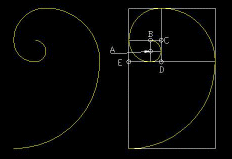
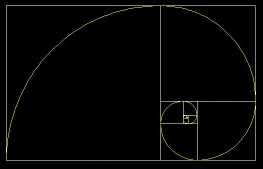
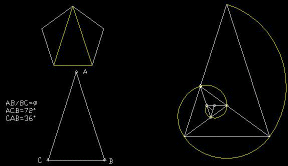
Marcus Chown, in an article in the New Scientist, 21/28 December 2002, pages 55-56, says:
"... The golden ratio ... is equal to ( 1 + sqrt(5) ) / 2 , or 1.6180339887... . ... you can square it simply by adding 1 and find its reciprocal simply by subtracting 1. ... if you take a golden rectangle ... and snip from it a square, you are left with another golden rectangle. ... The golden ratio ... crops up in
- ... the ... Fibonacci sequence ... 1, 1, 2, 3 ...
- ... phyllotaxis ... the arrangement of leaves on a vertical plant stem ... the most common offset angle turns out to be 137.5 degrees, which ... divide[s] 360 degrees into ... the golden ratio: 137.5 degrees an 222.5 degrees ...
- ... "quasicrystals" ... which have fivefold symmetry ...
- ... a rotating black hole flips from a negative to a positive specific heat when the square of its mass divided by the square of its spin parameter is equal to the golden ratio.
...".
Adam Maturana has a web page about the Golden Mean geometry of the Cydonia site on Mars.
REFERENCES:
Many of the facts and images are taken
from the following references - (however,
I am responsible for any erroneous speculations):
Bauval, R., The Orion Mystery (Crown 1994, 1995);
Bauval, R. and Hancock, G., The Message of the Sphinx
(Crown 1996);
Berry, L., and Mason, B., Mineralogy (W. H. Freeman 1959);
Cecil, T., Lie Sphere Geometry (Springer-Verlag 1992);
Coe, M., The Maya, 4th ed (Thames and Hudson 1987);
Ferguson, W., and Royce, J.,
Maya Ruins in Central America in Color
(Un. of New Mexico Press 1984);
Fletcher, N., and Rossing, T., The Physics of Musical
Instruments (Springer-Verlag 1991);
Hancock, G., Fingerprints of the Gods (Crown 1995);
Helgason, S., Groups and Geometric Analysis (Academic 1984);
Huang, K., and Huang, R., I Ching (Workman 1987);
Kappraff, J., Connections (McGraw-Hill 1991);
Kaufmann, W., Universe (Freeman 1988, 1991, 1994);
Lehner, M., The Complete Pyramids (Thames and Hudson 1997);
Lemesurier, P., The Great Pyramid Decoded (Element 1977, 1993);
Lemesurier, P., The Great Pyramid, Your Personal Guide
(Element 1987);
Levy, S., Automatic Generation of Hyperbolic Tilings,
in The Visual Mind, Emmer, ed. (Leonardo 1993);
Montesinos, J., Classical Tessellations and Three-Manifolds
(Springer-Verlag 1987);
Schele, L., and Freidel, D., A Forest of Kings (William Morrow 1990);
Tompkins, P., Secrets of the Great Pyramid (Allen Lane 1973);
Weeks, J., The Shape of Space (Marcel Dekker 1985).
For doing calculations about resonant frequencies of the structures of the Great Golden Pyramid, Mike Mitton has pointed out that the CSG web site has a very useful Calculators and Converters web page.
......